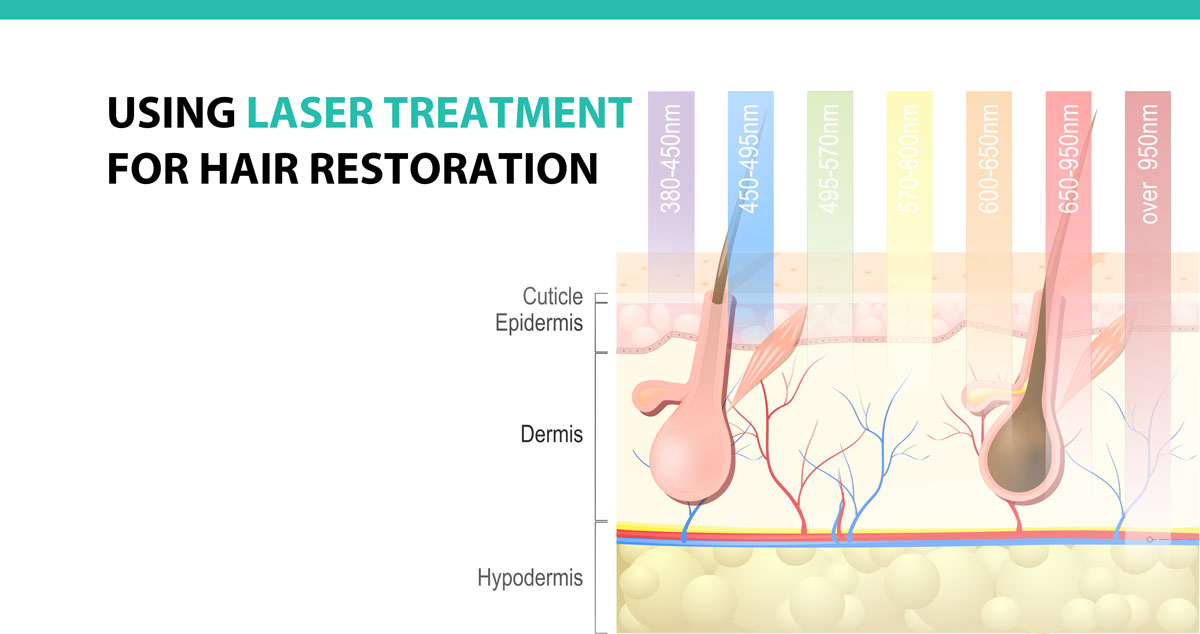
Hair loss is highly prevalent in men over the age of 35. However, it may still be a significant hindrance to your confidence or a disruption to a consistent look you’ve kept over the years. Most often, hair loss will be genetic. While age generally causes hair to thin, the amount and placement of the hair you loose will be dependent on your genetic disposition. For many, this can feel like a double-edged sword; genes aren’t changeable, and you cannot choose the ones you receive. Therefore, the only viable solution to considerable hair loss will be a restoration treatment.
The following guide will take you through everything you should know to understand how and why the laser hair restoration treatment is carried out, the type of candidate that may best benefit from it, the results you can expect, and how to best maintain these results. You need to remember that laser hair restoration is most compatible with a healthy lifestyle, therefore nutritional and routine changes may help you retain the most hair.
How Hair Loss Occurs And How IGrow Laser Treatment Fixes It
Most adults lose about 50-100 hairs every day. This may seem like a lot; however, it is invisible to the naked eye relative to the billions of hairs on your head. Hair loss, also known as alopecia, occurs as the result of hair follicles in your scalp being compromised or damaged by hormonal changes. These changes generally result from aging, disease, heightened stress levels, poor nutrition, or excess consumption of toxins such as alcohol or caffeine.
As men age, they are likely to produce less testosterone. This testosterone is responsible for hair follicles being able to absorb DHT, which is also known as the “hair growth” hormone. Treatments like IGrow laser stimulate damaged follicles, to promote their absorption of DHT, and the resulting production of hair.
The IGrow hair restoration treatment uses laser low-level light therapy. LLLT is a non-invasive wavelength treatment that re-energizes weakened hair follicle cells. This treatment encourages hair growth, leading to fuller hair.
How The IGROW Process Occurs
The IGrow hair restoration treatment uses an FDA-approved in-home device, which is safe to use without prior training. This device is shaped like a helmet and is worn hands-free directly on the head. The emitted light is non-evasive, leading to a painless treatment.
You will need to wear the device at least a few times a week, but not more than once per day. Each session should last from 15 to 60 minutes. Most clients have reported that a 30-minute wear every other day best supports their growth needs.
There’s no evidence that over wearing the device will provide better results; follicle overstimulation may, in fact, be damaging. Therefore, you’ll want to practice restraint when using it, and rely on a healthy lifestyle to accelerate your results.
The Results You Can Expect And How To Maximize Them
IGrow users have seen a 35% hair count improvement following a regular use of their device. Most users will begin to see results after the one-month mark but will need to keep using the device regularly for a while longer to achieve the hair restoration they were seeking.
To maximize your IGrow results, you will want to have a healthy lifestyle with a balanced diet. The leaner protein you consume (present in greens such as kale and spinach), the more stability your testosterone supply gains, and the more your hair follicles can absorb the resulting DHT.
You will also want to protect problem areas from excessive friction while you sleep, either by investing in a silk pillowcase or temporarily covering your scalp area as you sleep.
For more information on IGrow technology and how it can restore your youthful hairline, contact us today.










